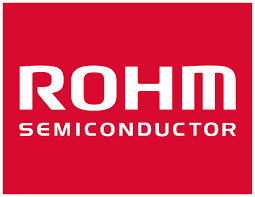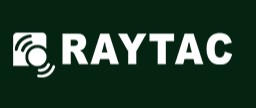subscribe newsletter
Back
Products
Power Management
Imaging Solutions
Motor Controllers and Drivers
Microcontrollers (MCUs)
Amplifiers
Interfaces
Back
Applications
Automotive
Consumer Electronics
Enterprise Systems
Industrial
Power Supplies
Back
Supports
Support Tools
Technical Information
- Overview
- WLINK Adapter Installation Guide
- ICE/ISP Operation Guide
- Evaluation Board User Guide
- Mass Production Programmer Operation Manual
- Mass Production Tools and Supplier Information
- ULINK ICE & ISP User Guide
- Peripheral Functions & Program User Guide
- Weltrend ARM 32-bit MCU Evaluation Boards List
Software Download
Reference Designs
Back
News & Events
News & Events
Back
ESG
Sustainable Development Policy and Implementation
Related Topics
Back
Investors
Financials
Corporate Governance
Shareholder Services
Contacts
Back
Careers
WT5075F
The WT5075F is a high-speed, high-performance and low power consumption 8-bit micro-controller, including Turbo 8052 CPU, 64K bytes embedded Flash, 256-byte direct-or-indirect-addressing SRAM, 2K-byte indirect-addressing-only SRAM, 40x4(max.) LCD driver, a Time-Base Timer, 4 multi-function timer/counters, 2-channel 12-bit PWM, 1-channel divider output, serial interface (UART and SPI), an 19-channel (15 external and 4 internal) 12-bit AD converter, 4 high-performance OPs, analog switches and three clock generators (32.768kHz crystal oscillator, high-speed crystal oscillator and high-speed RC oscillator) on chip.
Features
- CPU
-Turbo 8052 CPU
-Each machine cycle consumes 3 system clocks.
-Instruction execution time: 0.1875μs(at 16MHz), 92μs (at 32.768 kHz)
-Program memory: 64K-byte Flash Memory
- Data memory : 256B + 2KB SRAM
- Totally 11 interrupt sources: 9 internal sources and 2 external sources.
- 8 wake-up keys (WAKE0 ~ WAKE7) with edge-selection, interrupt-selection, wakeup-from-power-down-mode functions
- Input/output ports:
-69 pins for LQFP100 and DIE form, 44 of which are shared with LCD driver
-All GPIOs could be configured as 4 types: input with pull-up resistor, input without pull-up resistor, CMOS output and N-ch open-drain output.
- 3 sets 8052 standard 16-bit timer/counters: Timer 0, Timer 1 and Timer 2
-Timer 0 could be used as: a 13-bit timer, a 16-bit timer, an 8-bit auto-reload timer, two 8-bit timers.
-Timer 1 could be used as: a 13-bit timer, a 16-bit timer, an 8-bit auto-reload timer.
-Timer 2 could be used as: a 16-bit auto-reload timer/counter, a 16-bit capture timer/counter, a UART baud rate generator for both receive and/or transmit.
- 1 set of 18-bit timer/counter: Timer 3 which can be used as timer, event counter, pulse width measurement, frequency measurement.
- 2 sets 12-bit PWM for signal generation
- Time base timer with 8 interrupt sources
- Watchdog timer with programmable detection time
- Serial interface
-8052 standard UART: 1 channel
-SPI: Master/Slave modes, 1 channel
-Both UART and SPI could be from P35 ~ P37 or P75 ~ P77 by software selection
-I2C: Slave-mode-only, 1channel
- 2.5V and 1.25V regulator voltage outputs for applications
- 12-bit successive approximation type A/D converter
-VREF voltage could be internal (2.5V) or external VAREF pin.
-Analog input: 15 external and 4 internal channels
- 4 high-speed Operational Amplifier (OP1, OP2, OP3 and OP4)
-Power supply: from VREF (internal 2.5V or external VAREF pin)
-Input range: 0.05VREF ~ 0.95VREF
-Slew rate: 4.5V/us
-DC Gain=110dB, Unit-gain BW=7MHz
-Offset=2mV (max)
- 2 sets of analog switch for signals connection
- LCD driver/controller
-LCD direct drive capability (Max 40seg x 4com)
-1/4, 1/3 or 1/2 duties are selectable by program.
-1/3 or 1/2 bias are selectable by program.
- Power on reset (POR)
- Single/dual-clock operation
-Single-clock mode: high-speed clock only. Clock source could be internal RC Oscillator (max.12MHz) or external crystal oscillator (max. 24MHz)
-Dual-clock mode: both high-speed clock low-speed clock are used. High-speed clock source could be internal RC Oscillator (max. 12MHz) or external crystal oscillator (max.24MHz). Low-speed clock source is external 32.768KHz crystal oscillator.
- 2 power saving operating modes (IDLE mode and POWER-DOWN mode) and many control bits for specified peripherals could be selected.
- Operating voltage:
-DVDD = AVDD = 2.4 to 3.6V at 16 MHz / 32.768 kHz
-DVDD = AVDD = 2.7 to 3.6V at 24 MHz / 32.768 kHz
- ICE (In-Circuit-Emulator) embedded
- ISP (In-System-Programming) function by I2C interface
- Package: LQFP100
- CPU










